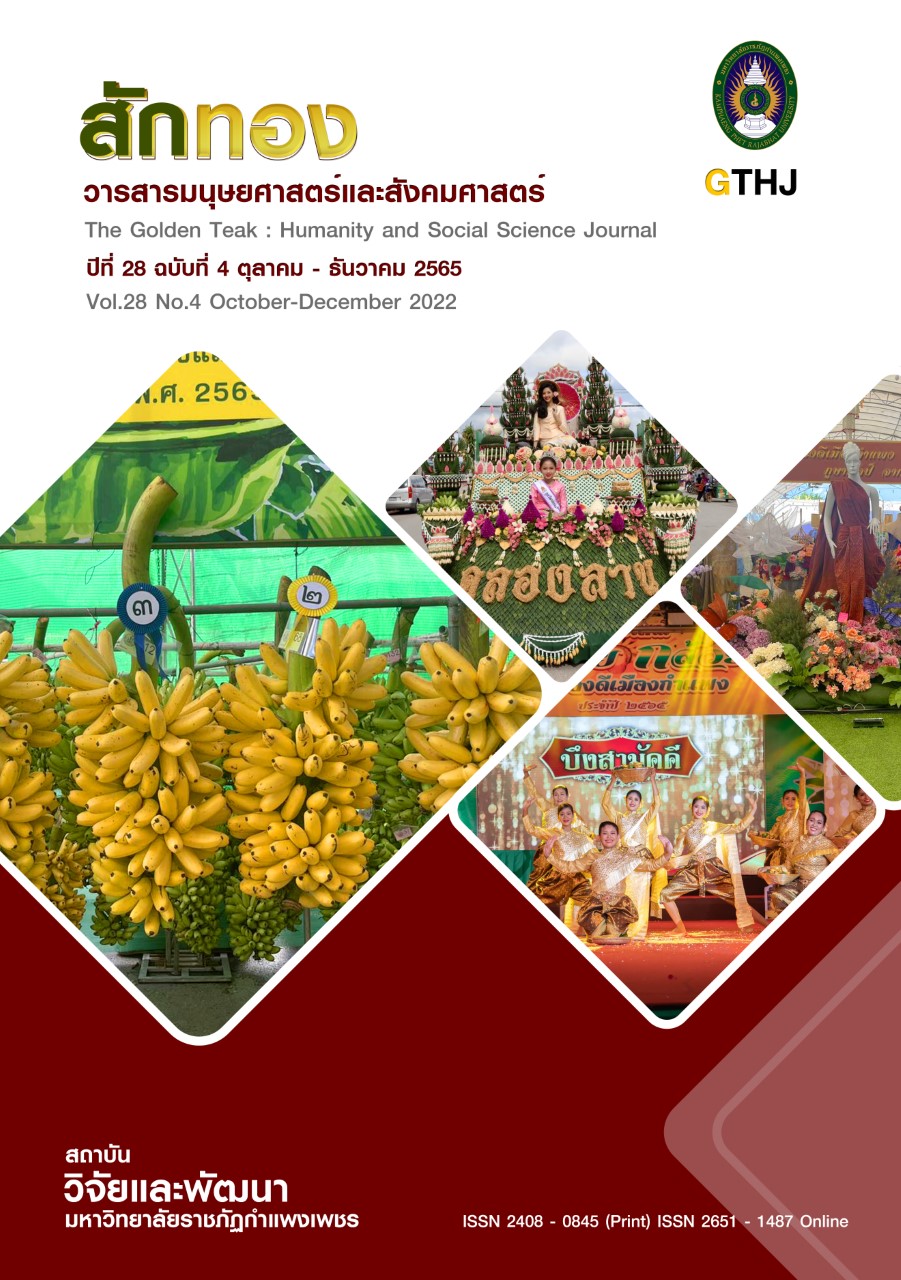Cultural Factors Affecting the Usage of Thai Personal Pronouns of the Vietnamese Students Learning Thai as a Foreign Language
Main Article Content
Abstract
This article aims to study cultural factors affecting the usage of Thai personal pronouns of the Vietnamese students who study Thai as a foreign language. The data were collected by studying documents and research related to personal pronouns, interviewing the Vietnamese students about how to use personal pronouns in Thai language and interviewing the Vietnamese teachers about the use of Thai personal pronouns of Vietnamese students. Thereafter, the analysis of the collected data was analyzed, compared and synthesized. The findings show that socio-cultural factors such as gender, age, status of and intimacy between speakers and listeners affect the use of Thai personal pronouns of the Vietnamese students who study Thai language. The students’ acquisition regarding the similarity and differences of Thai and Vietnamese cultures plays a part in increasing their effectiveness of using Thai language since the use of Thai personal pronouns are related to Thai culture, which is the obstacle of Thai language learning of the Vietnamese students.
Article Details

This work is licensed under a Creative Commons Attribution-NonCommercial-NoDerivatives 4.0 International License.
บทความที่ได้รับการตีพิมพ์เป็นลิขสิทธิ์ของวารสาร สักทอง : วารสารมนุษยศาสตร์และสังคมศาสตร์ สถาบันวิจัยและพัฒนา มหาวิทยาลับราชภัฏกำแพงเพชร
ข้อคิดเห็นใดๆ ที่ปรากฎในวารสารเป็นวรรณกรรมของผู้เขียนโดยเฉพาะ ซึ่งมหาวิทยาลัยราชภัฏกำแพงเพชรและบรรณาธิการไม่จำเป็นต้องเห็นด้วย
References
Brody, J. (2003). A Linguistic Anthropological Perspective on Language and Culture in Second Language Curriculum. In Lange, D.L. & Paige, R.M. (Eds), Culture as the core : perspectives on culture in second language learning (pp.37-52). Greenwich, Conn.: Information Age Publishing.
Byram, M. (1997). Teaching and assessing intercultural communication competence. Clevedon : Multilingual Matters.
Hiranpat, P. (2005, January). Intercultural communication and second teaching. Language and culture, 24(1), 82-92.
Kieu, T.H. (2021). An Investigation into Intercultural Components in Three Piloted English Textbooks for Vietnamese High Schools under The National Foreign Languages Project. VNU Journal of Foreign Studies[Online Serial], 37(1). Availble : https://js.vnu.edu.vn/FS/article/view/4655 [2021, May 7].
Naksakul, K. (1997, June). Pronouns in Thai language reflect Thai culture. The Royal Institute newsletter[Online Serial], 7(73). Available : http://legacy.orst.go.th/?knowledges=คำสรรพนามในภาษาไทยสะท้e [2021, May 11].
Nguyen, D. T. (2002). Gender and Person in Pronouns in Vietnamese Communication. Language[Online Serial], 156(2). [Online]. Available : https://dlib.hcmussh.edu.vn/ Viewerswf/?Id=5ac30707-2dda-4f2f-81bd-2ee17287ce2c&t=Ve-gioi-va-ngoi-o-nhung-tu-xung-ho-trong-giao-tiep-tieng-Viet-Nguyen-Duc-Thang [2021, August 18].
Nguyen, T. T. C. (2015, May). A comparative Study of Kinship Terms in Thai and Vietnamese. Journal of Humanities Naresuan University, 12(2), 39-52.
Office of the Royal Society. (2017). Dictionary of Linguistics (General Linguistics) Edition of The Royal Society. Bangkok : Abiz Inter.
Palakornkul, A. (1972). A Socio-linguistic study of pronominal strategy in spoken Bangkok Thai. Doctor’s thesis, University of Texas at Austin.
Panthumetha, N. (2016). Thai Grammar (8 th ed.). Bangkok : Chulalongkorn University Press. Panupong, W., et.al. (2012). Thai Reference Book - Standard Thai Language : word, phrase, sentence and discourse. Bangkok : Kurusapa Ladprao.
Prasithrathasint, A. (1986). Socio linguistics and foreign language teaching. In Proceedings of Linguistics and language teaching, Bangkok 1986 April 16-17 (pp.58-76). Bangkok : n.p.
Prasithrathasint, A. (2001). Sociolinguistics. (3 rd ed). Bangkok : Chulalongkorn University Press. Royal Institute. (2013). Royal Institute Dictionary 1999. Bangkok : Sirivatana Interprint.
Samovar, L. A., Porter, R.E., & McDaniel, E.R. (1985). Intercultural Communication : A Reader. (4 th ed.). Belmont, Calif : Wadsworth.
Wen, Q.Y. (2013). Problems of Thai Personal Pronoun Usage Based on Sociolinguistics of Chinese Students Studying Thai Language. Master’s thesis, Chiangmai University.


